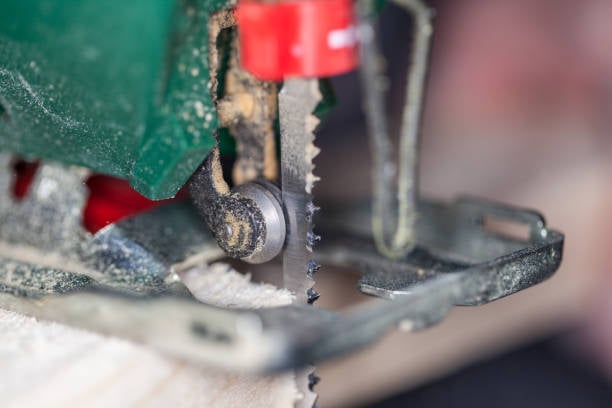reciprocating saw blade for concrete: What You Need to Know
When it comes to cutting through concrete, a reciprocating saw can be a lifesaver. But, like any tool, the wrong blade can make any job significantly more difficult. That's why it's essential to choose a blade specifically designed for cutting through concrete. In this guide, we'll go over everything you need to know about choosing the right reciprocating saw blade for your concrete project.
1. What is a Reciprocating Saw Blade for Concrete?
A reciprocating saw blade for concrete is designed to cut through concrete, cement blocks, and other tough materials. They are typically made from carbide, which is a very hard and durable material that can withstand the friction and heat produced when cutting through concrete. These blades come in many shapes and sizes, and the one you need will depend on the type of concrete you are cutting and the thickness of the material.
2. Benefits of Using a Reciprocating Saw Blade for Concrete
There are many benefits to using a reciprocating saw blade for cutting concrete. Firstly, it is much faster and easier than using a manual saw or drill. Additionally, it allows you to make precise cuts in tight spaces, such as corners or small areas. The blade is also very versatile, as it can cut through other materials such as brick, stone, and steel.
3. Types of Reciprocating Saw Blades for Concrete
There are two main types of reciprocating saw blades for concrete: segmented and continuous. A segmented blade has gaps between each segment, which helps to prevent overheating and allows for faster cutting. A continuous blade has no gaps, which makes it more durable but can also produce more heat during use. Segmented blades are typically used for cutting thinner sections of concrete, while continuous blades are better for thicker sections.
4. Choosing the Right Blade for the Job
Choosing the right blade is essential for a successful concrete cutting project. The blade you choose will depend on several factors, including the type of concrete, the thickness of the material, and the cutting depth you require. As a rule of thumb, the harder the concrete, the more blades you will need to use. If you are cutting through reinforced concrete, you may need to use a diamond-tipped blade.
5. Safety Precautions
When using a reciprocating saw blade for concrete, it is essential to take safety precautions to protect yourself and others around you. Always wear safety goggles and a face mask to protect your eyes and lungs from airborne dust and debris. Additionally, make sure to wear safety gloves to protect your hands. Finally, make sure the blade is properly installed before using it and never cut with a damaged or worn blade.
6. Maintenance and Care
To keep your reciprocating saw blade in good condition, it's essential to perform regular maintenance and care. After each use, clean the blade with a wire brush to remove any remaining concrete or debris. Additionally, keep the blade lubricated with a few drops of oil before each use to prevent it from overheating and developing cracks. Finally, store the blade in a dry, cool place, and never expose it to extreme temperatures or humidity.
7. Tips for Cutting Concrete with a Reciprocating Saw Blade
When cutting through concrete with a reciprocating saw blade, there are several tips you can follow to make the job easier and more efficient. Firstly, start by making a small pilot hole with a masonry drill bit to guide the blade and prevent it from wandering. Additionally, avoid putting too much pressure on the blade, as this can cause it to overheat and crack. Finally, keep the blade moving at a steady pace to prevent it from getting stuck.
8. Using a Reciprocating Saw for Demolition Purposes
A reciprocating saw can also be used for demolition purposes, such as removing concrete slabs or walls. When using the saw for demolition, make sure to use a blade with large teeth, as this will make the job faster and more efficient. Additionally, wear protective gear, such as a hard hat and safety boots, to protect yourself from falling debris.
9. Common Mistakes to Avoid
There are several common mistakes people make when cutting concrete with a reciprocating saw blade. Firstly, using the wrong blade can make the job significantly harder and more time-consuming. Additionally, putting too much pressure on the blade can cause it to overheat and crack. Finally, never force the blade through the concrete – let it do the work for you.
10. Conclusion
Cutting through concrete can be a challenging task, but using the right reciprocating saw blade can make all the difference. By following the tips and advice outlined in this guide, you can ensure that your concrete cutting project is a success.


